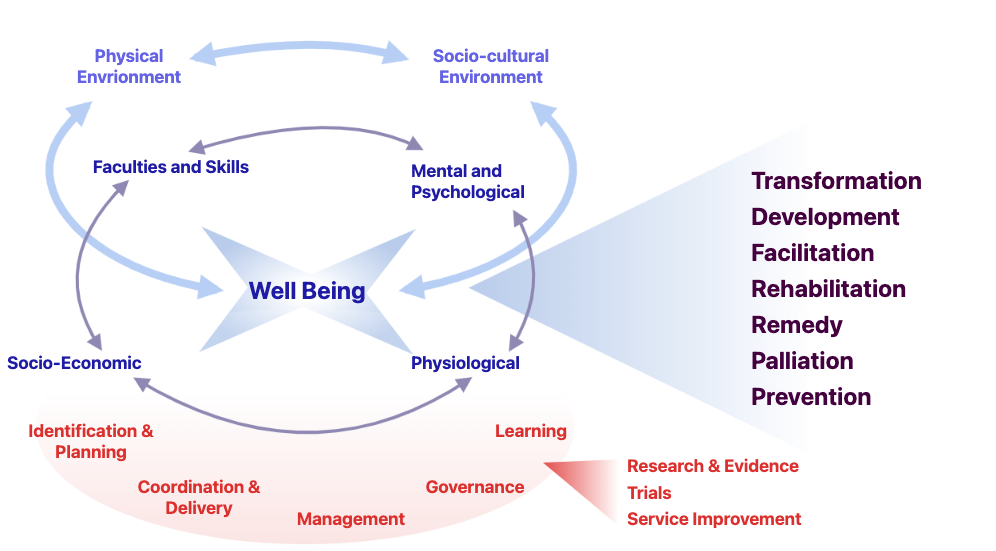Intervention Theory Model
The Intervention Theory Model is an attempt to create a representation of the multi-dimensional complexity of human wellbeing because this is the “space” in which social investments and innovations are taking place.
The model presents three perspectives or projections of wellbeing:
- A structural one which distinguishes between the internal and the external and between the different sorts or areas of wellbeing.
- The range of intentions or purposes of an intervention or service where a care plan may consist of a number of these at the same time or in sequence.
- A process and learning perspective.
We will examine each of these as follows:
Consider four major sub-domains or perspectives of human wellbeing. These are:
- Physiological wellbeing,
- Mental and psychological wellbeing,
- Wellbeing associated with faculties and capabilities, and
- Socio-economic wellbeing.
Each of these contain many facets which interact with each other and there are strong couplings between the four domains. These interdependencies can create catastrophic cascades of positive feedback, self-maintaining loops and deadlocks as well as sustainable coping and development. All of these are affected by, and interact with, external elements of the physical environment and the socio-cultural environment which also interact in complex ways.
Fortunately, for most of us, for most of our lives, we have only one major problem, challenge or crisis at a time. A specific remedial intervention, perhaps with some rehabilitative components, is a sufficient and appropriate response to what will be experienced as an episode of care in which a problem gets fixed. Integration, from both the providing and receiving perspectives, are usually achievable through the planning and standardisation of pathways and protocols of a single service which can be specified with sufficient flexibility to respond to the levels of variation and uncertainty experienced in most cases of simple episodic care.

